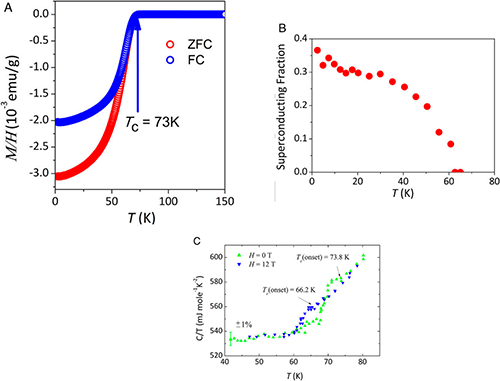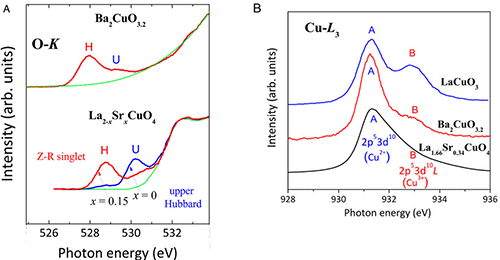New cuprate superconductor may challenge the classical wisdom
Date:26-06-2019 Print
Superconductivity is one of the most mysterious phenomena in nature in that the materials can conduct electrical current without any resistance. The cuprates hold the record high superconducting temperature at ambient pressure so far, but understanding their superconducting mechanism remains one of big challenges of physical sciences listed as one of 125 big quests announced by Science. Currently consensuses are those: first, the main stream theories are built based on single band model of 3dx2-y2 orbital that locates at the top of Fermi surface; Secondly, the superconducting transition temperature Tc is sensitive to the doping level (p); thirdly, overdoping beyond the certain carrier density diminishes superconductivity. The recent discovery by Prof. Jin’s team at Institute of Physics, Chinese Academy of Sciences (IOPCAS) on a new high Tc superconductor Ba2CuO4-δ shows two unique features: an exceptionally compressed local octahedron and heavily over-doped hole carriers. These two features are in sharp contrast to the favorable criteria for all previously known cuprate superconductors. The compressed local octahedron results into a reversed orbital order with 3z2 lifted above 3dx2-y2 leading to strong multiband scenario, while the overdoped state violates the previous mot holding for superconducting phase. Impressively the new material demonstrates superconducting transition temperature with Tc above 73K, 30 K higher than that for the isostructural classical “conventional” superconductor based on La2CuO4. Thus, the discovery of high Tc superconductivity in Ba2CuO4-δ calls into question the widely accepted scenario of superconductivity in the cuprates. This discovery provides a totally new direction to search for further high Tc superconductors.
This study entitled “Superconductivity in a unique type of copper oxide” was published on Proceedings of the National Academy of Sciences (www.pnas.org/cgi/doi/10.1073/pnas.1900908116).
The study was supported by the National Science Foundation as well as the Ministry of Science and Technology of China
Contact:
Institute of Physics Chinese Academy of Sciences
Changqing JIN
Email:Jin@iphy.ac.cn
Key word:
Superconductor | Compressed Octahedron| Orbital Reversal | Heavily overdoping | Pressure synthesis
 |
| Fig.1 The superconducting transition of the sample showing Tc at 73K (A) The Meissner effects; (B) Superconducting volume fraction in terms of superfluid density estimated from μSR; (C) Specific heat measurement. |
 |
| Fig.2 The in-plane Cu-O and apical Cu-O bond length showing the unique compressed local octahedron coordination that leads to the orbital reversal in cuprate superconductors. |
 |
| Fig. 3XAS measurements (A) O-K edge. (B) Cu-L3 edge showing the extremely overdoping state |


